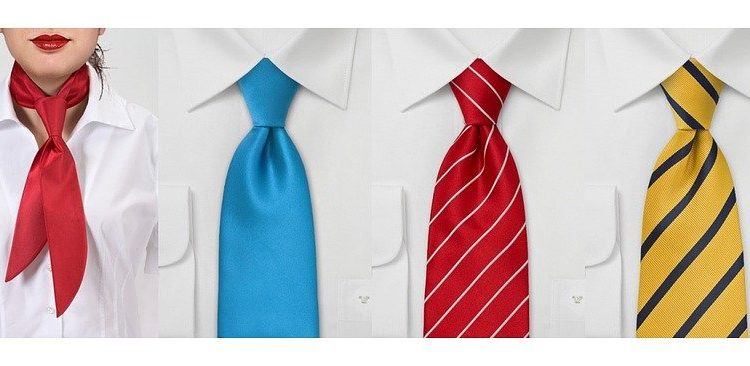The Comprehensive Colour Guide to Ties


Undeniably, there’s definitely an art for mastering the matching shirt and tie combination. From deciding which colours go well together to realising the prints that complement each other, it can be tricky. Take a look at this comprehensive shirt and tie guide:
Table of Contents
Complementing colours
When you’re aiming for a complementary look rather than a bold contrast, consider the following:
One go-to piece of advice when it comes to picking colours for a shirt and tie is to stick to a ‘theme’. Are you creating a cool or warm colour palette? Cool colours are blues, purples and greens and warm hues include reds, oranges and yellows.
Ideally, your tie should always be darker than your shirt if you want to strike the perfect complementary balance. So, to match a cool-coloured shirt and tie, you would pair a navy coloured tie with a light-blue shirt. Similarly, a burgundy tie would match well with a pink shirt.
If you’re feeling daring, then make an impact by mixing your themes up. Try a warm colour such as red against a cool blue background — this is a simple way of making your look standout.
For maximum contrasting pieces, select colours that are opposite to each other on the colour wheel. If you’re going for a bold look, this can be a good move. Think orange ties against blue shirts and hues of purple against green.
Crisp white shirts are the ideal base for most ties. Go monochrome with a classic black tie or mix it up with bright purple.
Matching styles
If you are pondering over whether a classic collar will go with a bow tie for a formal event, then fret no longer as we have the answer.
A traditional option, the classic collar is a familiar choice for the suit connoisseur. This matches well with a four-in-hand knot (the classic tie).
Alternatively, a cutaway collar has wider points that are angled outwards instead of pointing down. These should be worn with a full or half Windsor tie knot.
Halfway between a classic collar and a cutaway collar, you’ll find the semi-cutaway collar. To complement this shape, a larger knot such as a half or full Windsor is a good choice.
Sometimes a shirt might have an extreme cutaway collar. This is a very widespread collar, with tips cut away and facing towards the shoulders. Slim ties and small tie knots match well with these shirts.
Considering a button-down collar? This is where each side of the collar is fastened to the shirt with a button. This can be worn without a tie and still look smart.
For formal wear, a wing collar is a likely choice and you can’t go wrong with this style. This is designed for an evening shirt and should be worn with bow tie and tuxedo.
Perfecting prints
If your shirt and tie combo isn’t setting you apart from the masses, then go one step further and introduce a printed piece to the equation. But, how can you avoid a print faux pas?
The rule of thumb is that the pattern on the tie should be larger than that on the shirt. Although, if the tie is bright and bold anyways, this rule could be broken to an extent.
If you’re working with a striped shirt, a stylish way to match a tie is with more stripes. Avoid choosing the same size stripes and instead choose complementing hues as mentioned above. Interestingly, polka dots contrast well with a striped shirt too.
Take note if you wear a small-patterned tie with a check shirt though, as the tie can become lost against its background. Therefore, choose a tie with a bold print when wearing a gingham shirt — think paisley, for example.
A great piece of advice for creating a quirky pairing is that you should take the tie’s minor colour and pair this with the major colour in your shirt. If your tie has light blue pinstripes for example, opt for a light blue dress shirt.
So, there’ll be no more mismatching in your wardrobe when it comes to ties if you take heed of this complete guide. Think warm and cool hues for a safe look or opt for bold prints in contrasting colours for something more out-there.

